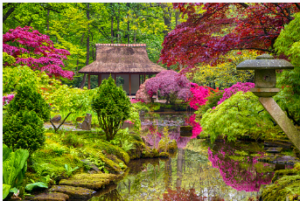Garden design involves more than planting flowers; it involves strategically positioning plants to frame or obscure views, establish scale, and generate movement in your landscape. Although repetition in landscape design helps create orderly aesthetics, too much repetition can become monotonous over time.
 To avoid this problem, consider choosing https:/catnikdesignstudio.com.au garden design Adelaide plant material that changes with the seasons – bold summer hues, compared to more subdued hues of winter, are more visually striking and should be your priority when choosing seasonal plant material.
To avoid this problem, consider choosing https:/catnikdesignstudio.com.au garden design Adelaide plant material that changes with the seasons – bold summer hues, compared to more subdued hues of winter, are more visually striking and should be your priority when choosing seasonal plant material.
Sense of Place
Sir Geoffrey Jellicoe once observed that modern landscape architecture lacks genius loci or an established sense of place. Indeed, a sense of place encompasses three essential components that garden designers should strive to incorporate in their designs:
Form and colour are key elements in garden design that provide context to its surroundings. From formal gardens with geometric forms to more informal ones utilising natural plants, form themes can serve to organise and shape landscapes accordingly.
Colour can also be used to add contrast, unify and emphasise. Dark hues with coarse textures create the impression that a garden is smaller, while bright and fine textures give an illusion of expansion.
Attain a sense of place through regional native plantings, an emerging trend in gardening that supports environmental sustainability by encouraging biodiversity. A mountain prairie garden could feature thread leaf giant hyssop (Agastache rupestris), blue grama grass (Bouteloua gracilis), and blanket flower (Gaillardia aristata) as examples of such native species that give your garden its local character and charm that endure.
Rhythm
Rhythm in a garden can be described as the pace at which its surroundings move and lead the eye around, creating an impression that everything is alive and inviting. Rhythm can be created using repetition, alternation, inversion, or gradation techniques.
Repetition of shapes like circles, triangles and squares when planting or using brick herringbone patterns on pathways is an effective way of creating rhythm in your garden. Grouping plants that share similar characteristics while varying their height can also draw the eye across it all. Grouping similar plants and changing up their heights creates rhythm while drawing your eye across it all. Repetitions of circles, triangles squares in hard landscaping features like planting or brick herringbone patterns on walkways can unify these hard landscaping features with movement – creating a sense of movement while unification of hard landscaping features like circles, triangles squares can create rhythm and draw the eye across it all!
Rhythm is an important https://catnikdesignstudio.com.au garden design Adelaide that can also be achieved through lines. Straight paths provide more linear movement than curvier ones, and using materials like smooth Donegal quartz mixed with rugged river stone pebbles can help establish a rhythm. Repetitions of shapes such as columns, arches and steps also create a sense of rhythm.
Form
The form is the primary visual element that spatially organises a landscape and defines its style. This characteristic can be found in both hardscape elements as well as plants. The form can be expressed through shapes of structures, plant beds or garden ornaments and even by creating gradients of size, colour or texture (e.g. small grasses backed up by medium and large ones).
Lines play an integral part in creating the space and directing where visitors look and move throughout a garden, from creating order and formal crispness to inviting movement through curves or interruptions – such as axial relationships or cross-axial relationships – creating focal points or interrupting them all together to form focal points or create focal points – such as creating focal points such as axial relationships or cross-axial relationships. Texture defines how soft or coarse an overall feel might be of a garden environment.
Function
From the outset of garden design, its purpose should be considered. A garden should include focal points to direct one’s gaze around its landscape and an aim for its plantings; its design should also consider topography, soil conditions and drainage issues.
Contrast is another key design component and can range from extreme to subtle depending on the designer’s wishes. Examples include using light against dark hues, straight versus curved lines and coarse vs fine textures in their designs.
Plantings can define boundaries within a garden through hedges or walls. Hedgerows and walls can be evergreen or deciduous, formal or informal, short or tall. Using vibrant colours and textures helps distinguish these boundaries from the rest of your garden space.